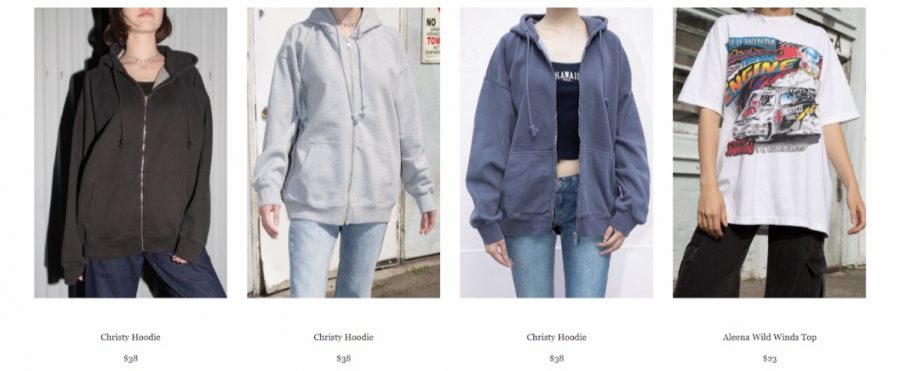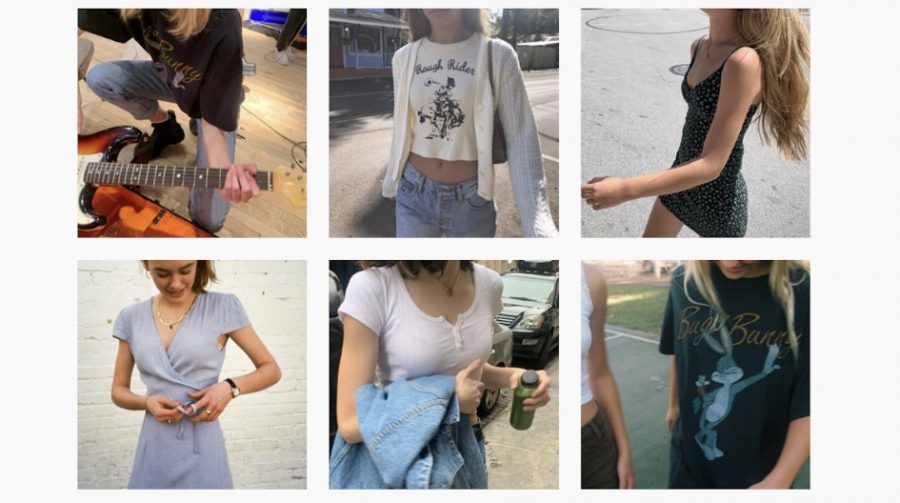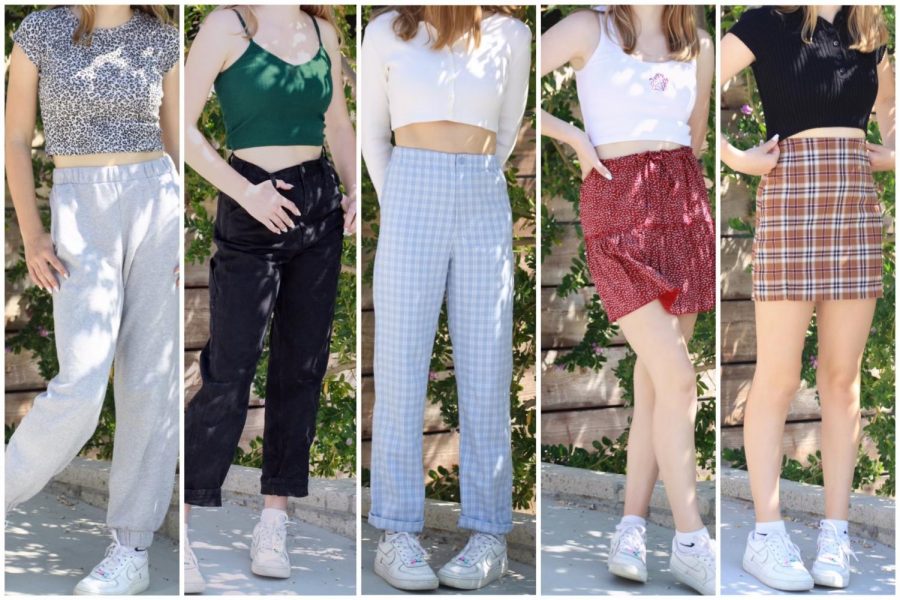OPINION: Brandy Melville, a broken bandwagon
Brandy Melville’s lack of variety in size and representation has negative effects on young buyers.
October 8, 2020
It’s a typical school day; your alarm wakes you up with a jolt as you drowsily stumble towards your closet to get dressed. A brand new top from the infamous Brandy Melville clothing store catches your eye. You hurriedly put it on, looking forward to the wave of compliments you’re bound to receive once you step on campus. Yet, lurking in the shadows is an uproar of complaints about their policies and how the company has managed to mentally impact and exclude a large number of girls. Brandy Melville has created a negative environment surrounding their products by designing clothes with a lack of diversity in body types and by showcasing models that don’t represent minorities.
“One size fits all” is a label that’s deliberately slapped onto a majority of Brandy Melville’s clothes. In reality, they are ridiculously small and are ideally portrayed on very slim models. Naturally, one size isn’t capable of fitting all body types, and the majority of larger sizes that the company offers are categorized under the “oversized” aesthetic. This, in turn, marginalizes and ostracizes a multitude of beautiful figures who are commonly underrepresented in today’s media.

Vulnerable, adolescent teenage girls are the demographics targeted by Brandy Melville’s marketing. Their lack of inclusivity and narrow sizes can result in customers taking it upon themselves to do whatever they can to fit in with the popularity of the brand. As teenagers, expressing oneself with fashion holds great significance in shaping individualism and growth. When comparing one’s worth to the ideal image that Brandy Melville perpetuates, a toxic mentality can develop, in which one associates being “skinny” with normal. Is it really worth making a profit off of pressuring teens to squeeze into a measly pair of jeans?

In addition, Brandy Melville’s predominantly Caucasian models further fuels discrimination within their community. Their social media platforms, which are their main source of advertisement, are filled with Caucasian influencers, sprinkled with the very occasional representation of different ethnicities. This pours salt into the wounds of young girls who worry that they’ll never fit into stereotypical standards of beauty. For our generation to become more proudly diverse, this marginalized bar of old-fashioned standards needs to be abolished.
Collectively, these eurocentric standards are reflected in Brandy Melville’s hiring policy. Aspiring future employees are compelled to fit the portrayal of their models, regardless of an official resume. According to a rejected job applicant, who was a person of color, applying for Brandy Melville was like “stepping into a magazine,” and her brief application required employers to take a photo of her, while four contents were set up on a post-it note. After no response, she described that “her self-confidence level was so low” and that she felt “inferior” when walking into the store.
So, what actions can be taken to address these concerns? Brandy Melville could produce greater quantities of larger sizes without categorizing them under the condescending baggy aesthetic. The company also needs to implement diversity in company representatives in order to provide a safe space for people of all shapes, colors and sizes. All of these steps should be portrayed throughout all platforms of advertisement, from their social media to the official shopping website to their in-store policies.
“I own cute clothes from Brandy. Does that make me a bad person?,” you may ask. No, but it’s important to be aware of what you’ve been subconsciously supporting through their brand. As trendy as their styles may be, I wouldn’t solely rely on this brand for inspiration, since its unethical morals may influence your judgment. In the meantime, I’d suggest looking towards brands that are more inclusive. It’s time to support small businesses and branch out!
















Siya Bhakta • Oct 11, 2020 at 2:56 pm
I love this article Laura!! It’s so awesome that you’re bringing out the truth on this topic that affects so many girls and their self-esteem. I think it’s so important that we bring light to the lack of diversity of ethnicities in these popular companies.
Ashley Newman • Oct 9, 2020 at 6:44 pm
This is truly amazing Laura. You left nothing out and spoke what everyone has been thinking. Their brand image really does need change and you demanded it. Proud. 🙂
Adler Striegel • Oct 8, 2020 at 3:39 pm
Laura!!! I love this article so much ohmygosh. I completely agree with everything you said, I feel like a lot of teenage girls have at one point felt disappointed or upset that they couldn’t fit into their one size fits all clothing. Overall you did an amazing job!